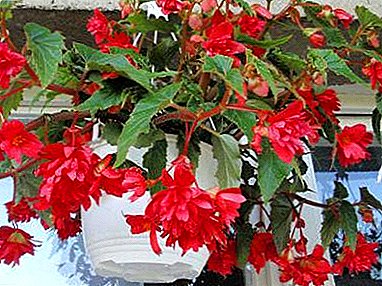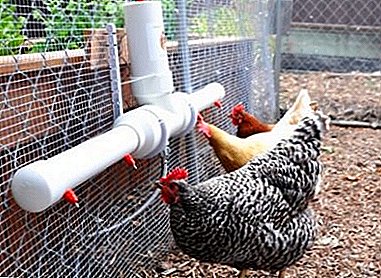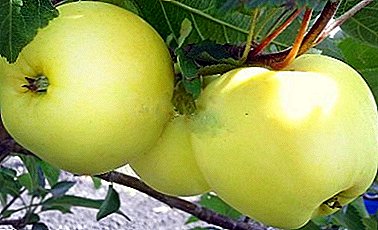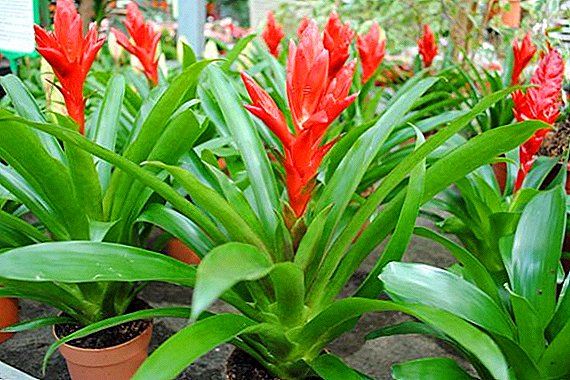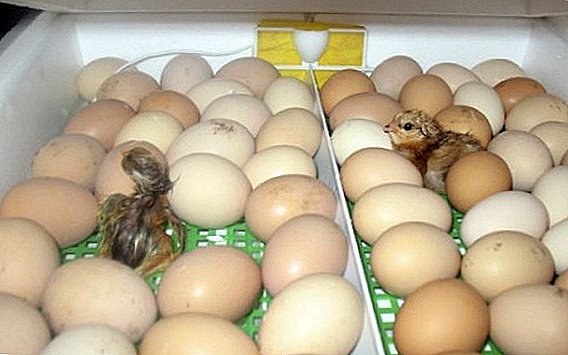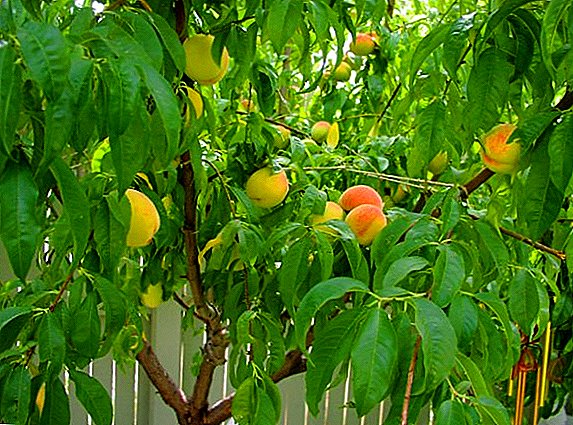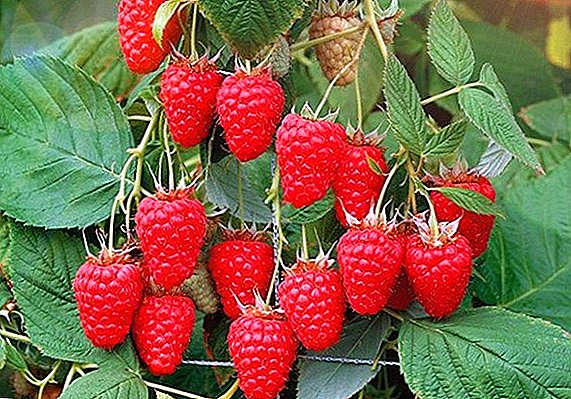 "Tourmaline" is a late-ripening raspberry variety, which is distinguished by large-fruited, good transportability and enviable yield. Consider the description of this variety, its main features and the main requirements for its cultivation.
"Tourmaline" is a late-ripening raspberry variety, which is distinguished by large-fruited, good transportability and enviable yield. Consider the description of this variety, its main features and the main requirements for its cultivation.
Selection
The variety "Tourmalin" was created by L. I. Chistyakova and I. I. Bogdanova at the Sverdlovsk Experimental Gardening Station. It was obtained by selecting from seeds obtained as a result of free pollination of seedlings of Scottish raspberry varieties.
Check out the list of raspberry varieties that gardeners recommend: Maroseika, Vera, Bryansk Miracle, Monomakh's Hat, Giant of Moscow, Patricia, Krepysh, Fairy Tale, Orange Miracle, "Himbo Top", "Brilliant", "Brusviana", "Lyachka", "Zyugan".

Description of the bush
Raspberries varieties "Turmalin" grows in the form of medium-sized bushes. They reach a height of 1.4-2.2 meters. They have medium thickening, upright shoots, quite strong. The spikes on the shoots are missing.
Fruit Description
The berries are quite large - weighing 3.5-5.5 g, sour-sweet in taste, bright pink in color. They have an elongated cone shape. Berries that have reached maturity, are perfectly removed from the leg, can hang for a long time on the bushes and not crumble.
Did you know? There is a purple raspberry - the result of crossing black and red raspberries. Brought such an unusual species in 1893 in Geneva.

Lighting Requirements
The choice of the place of landing raspberries is an important stage in growing. "Tourmaline" loves the light and places that rarely have a shadow.
Soil requirements
Raspberry is very demanding on the soil on which it grows. For it is best suited loose earth, containing a sufficient amount of organic and mineral fertilizers. Soil acidity is also important - it should be in the range of 5.7-6.6 pH. Prepare a plot for planting raspberries in advance and destroy all weeds on it.
Before planting raspberries need to fertilize the soil. You can use manure, compost, ash, superphosphate, potassium sulfate.
Flowering period
The peculiarity is that the flowering of this bush does not occur right away over the entire height. First, the upper part of the shoot blooms. After that, the middle begins to bloom, and only then the flowers appear on the lower level. Berries are knotted from pollination by their own pollen, as the flowers of this plant are self-fertile.

Yield
One of the most important factors affecting yield is how tightly the bushes are planted. Between the rows there should be a distance of 2-2.5 m, and between the plants themselves - 0.4-0.6 m. On average, this variety will yield from 2 to 3 kg from one bush.
Did you know? You can make tea from raspberry leaves. To do this, they must be mashed before selecting the juice and blackening, and then dried in the oven.
Transportability
This variety has good transportability - during storage, the berries do not become darker and do not crumble.
Resistance to environmental conditions and diseases
In a period when it is very hot outside, the bush needs abundant watering. The variety is well adapted to survival in urban environments (normally carries smoke and air pollution).
Tourmaline has good resistance to gray rot and a raspberry beetle, but can sometimes be slightly affected by a fungal disease called purple spotting, which causes the appearance of long red-purple spots on the leaves. Over time, the spots turn dark brown. Appears in August and September. 
To prevent this disease, provide good care for the raspberries - conduct timely pruning and fertilizing, remove old and damaged shoots, regularly collect fallen leaves. An important role is played by the placement of raspberries as well - in damp, shaded places the probability of a fungus is much higher. In severe cases, fungicides, such as Bordeaux liquid, "Fundazol", "Hom" and others, will help.
Important! If the disease affects more than half of the bush, it can not be saved. This bush must be uprooted and burned, and the soil beneath it must be treated with a fungicide. It is not recommended to plant raspberries in this place for the next five years.
Winter hardiness
"Tourmaline" has an average resistance to frost and sometimes freezes. However, the variety has one nice feature - from the lower end of the shoot that survived the winter, it produces quite strong fruit branches, thereby compensating for the loss of the upper part of the stem.
Learn how to properly prepare raspberries for winter.
Use of berries
Berries varieties "Tourmaline" suitable for universal use. Most often, fruits are eaten fresh. They make juices, compotes, teas or decoctions. Also "Tourmaline" is well suited for freezing.

Important! Despite the fact that raspberry is a low-calorie product, it contains about 12% of sugars, alcohols, acids and vitamins such as A, B and C.
Advantages and disadvantages
Compared to other varieties, "Tourmaline" has a large number of positive aspects.
pros
- Large berries.
- High yield.
- Lack of thorns on the shoots.
- The fruits have great taste.
- Good transportability.
- Increased disease resistance.
Minuses
- Mandatory pruning in the fall.
- Tendency to freeze.

Raspberry "Tourmaline" is a good choice for planting both at home and on plantations. Its large, tasty berries will not leave indifferent neither children nor adults, as well as are universal in use and easy to assemble.


